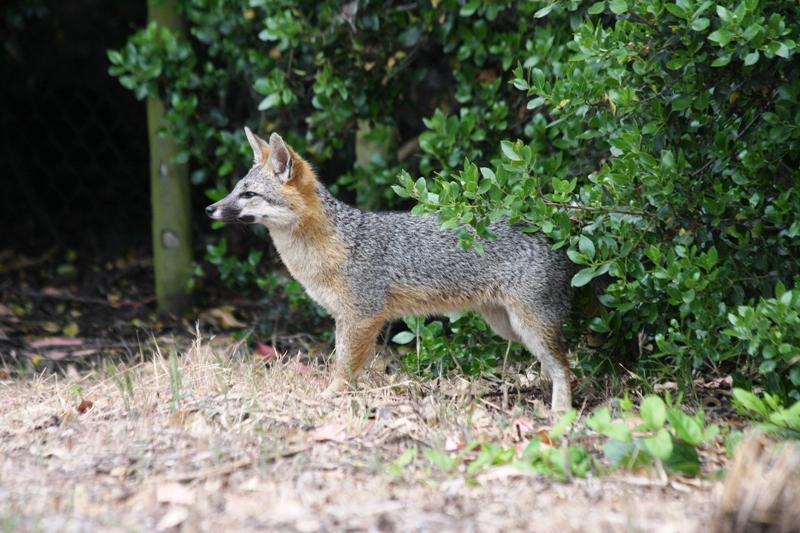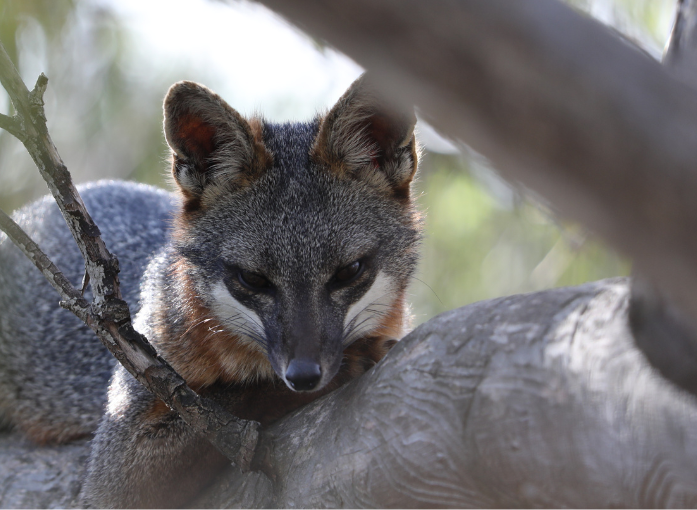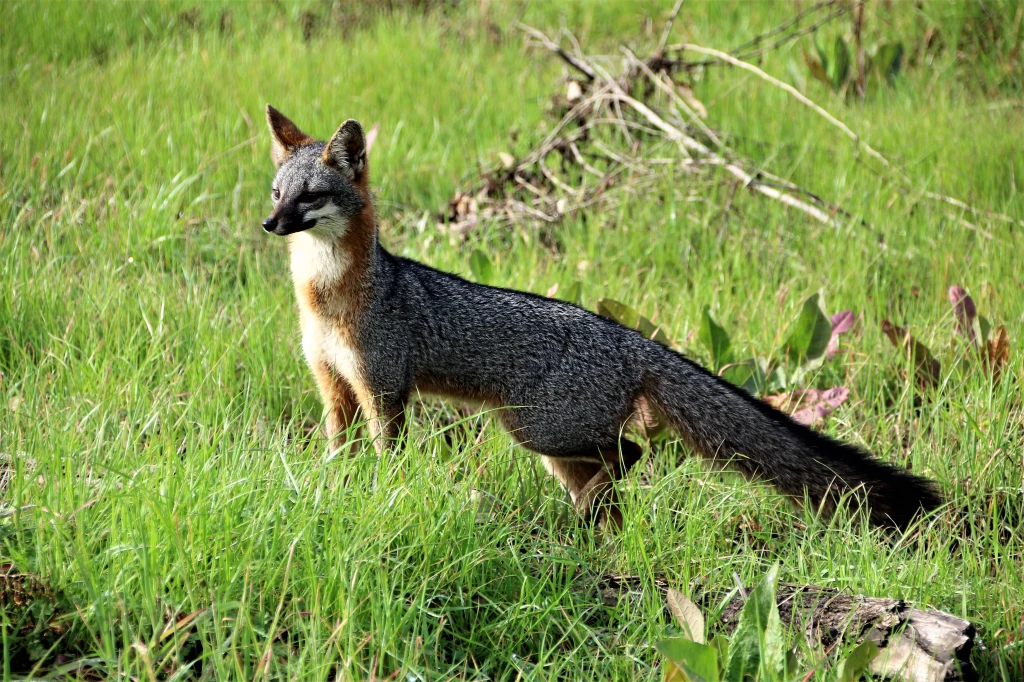Laimos Decides
by William C. Leikam
President, CEO & Co-founder, Urban Wildlife Research Project
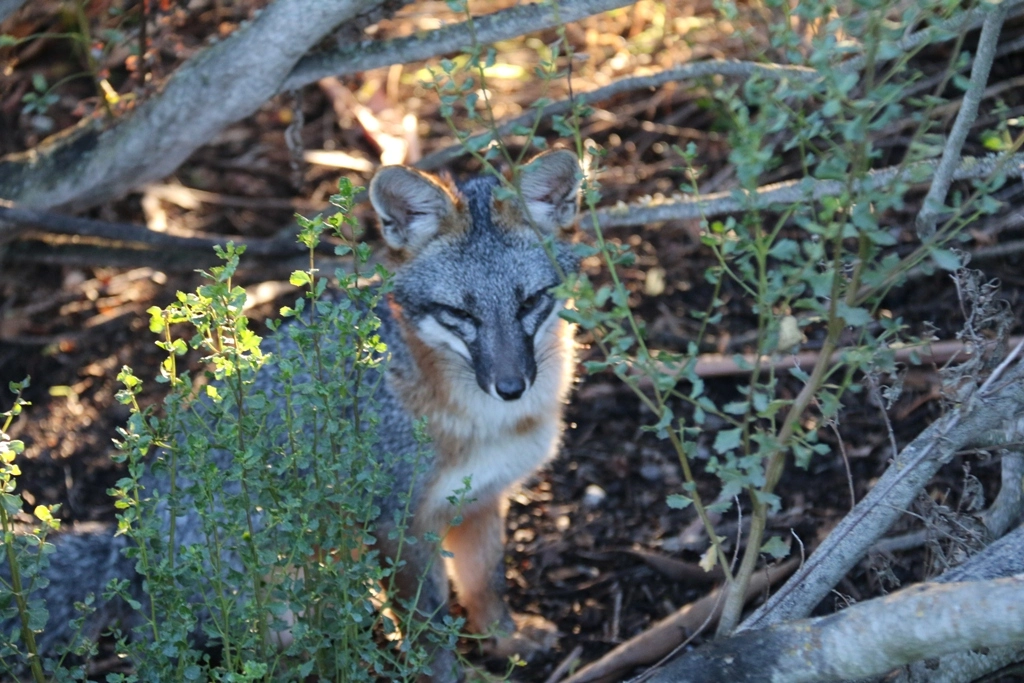
The two foxes Laimos and Big Eyes are simply regular, ordinary gray foxes doing ordinary gray fox things like sleeping in preferred places near the big clearing, waking about two to sometimes three hours before darkness settles in, before they go out at night to find themselves a fat woodrat or a cottontail rabbit, or maybe even that squirrel way up there in the tops of that black walnut tree. Their behavior is simply the daily routine for a gray fox pair.
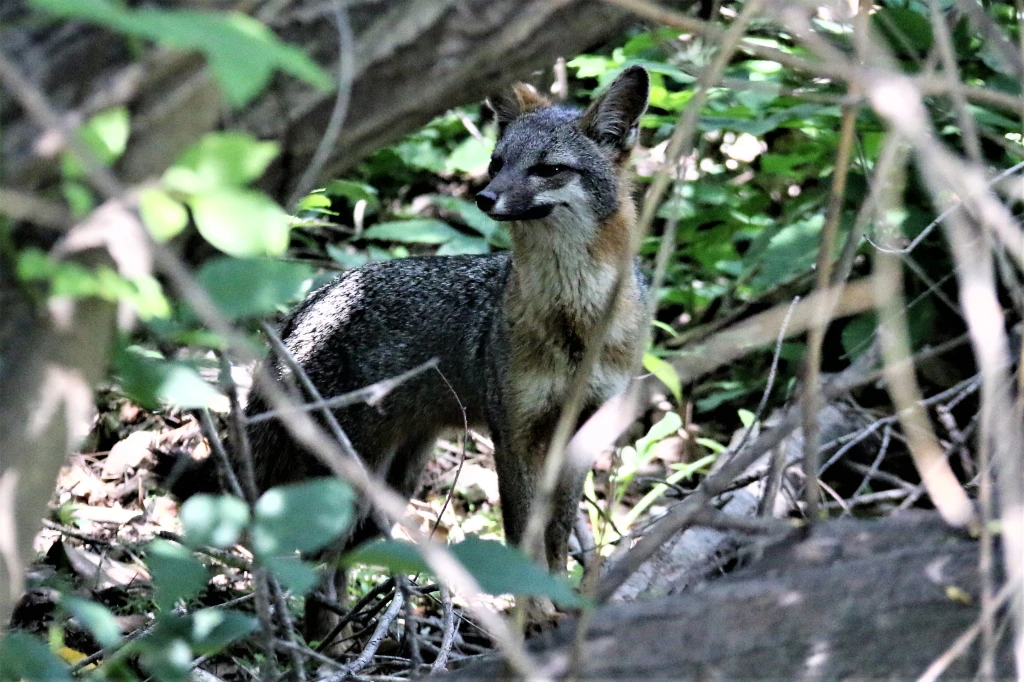
In carefully watching these foxes, sometimes I see into not so much a new behavioral trait, but the way that they handle the situation. About a year ago, maybe a bit more, Laimos came up out of the thicket and climbing up and onto a relatively small branch that was by eyeball measurement alone six inches in diameter, he found himself above and out in the middle of the blackberry thicket. He stood there on that branch watching me. As the Gray Fox Log entry reads, “I swapped out the cards on camera #5 and when I looked up, there was Laimos standing on a low branch on the fallen tree watching me. I took several pictures of him there, then approached camera #13. I took several more pix of him from that direction, swapped cards, noticed that the camera had been moved, reset it and then walked back to camera #5. He looked to his right, looked ahead and paused on that spot for maybe a second or two, checked back to his right, then over to his left again. He paused on that spot for a moment as if thinking about walking over that way, but something held him back. He paused on the area just in front of himself maybe a foot and a half away.”
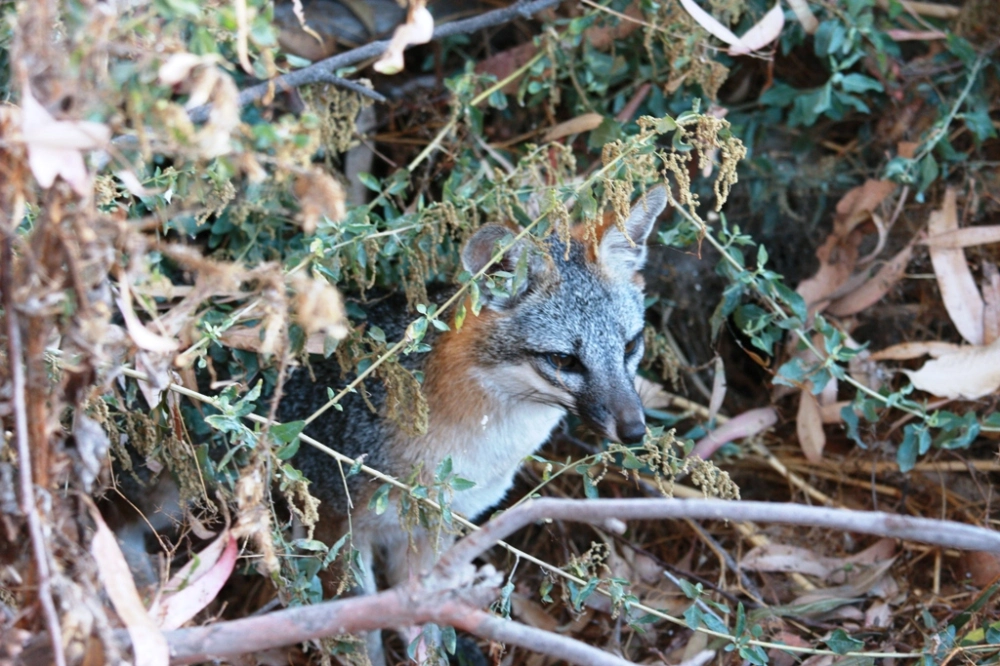
It was obvious to me that he was in the process of deciding how he was going to get down and out of that situation he’d climbed into. I also saw that he did not want to just go back down into the thicket the way that he got up there. “He took two steps along the branch and slipped down into the thicket. After about 30 seconds, he emerged from the brush and came out into the open. He sniffed about. From behind him, I saw movement. At first, I assumed that it was the raccoon Pesky, but instead it was his mate Big Eyes. I had backed off considerably and I guess that it was enough for her to feel safe being out in the open with her mate.”
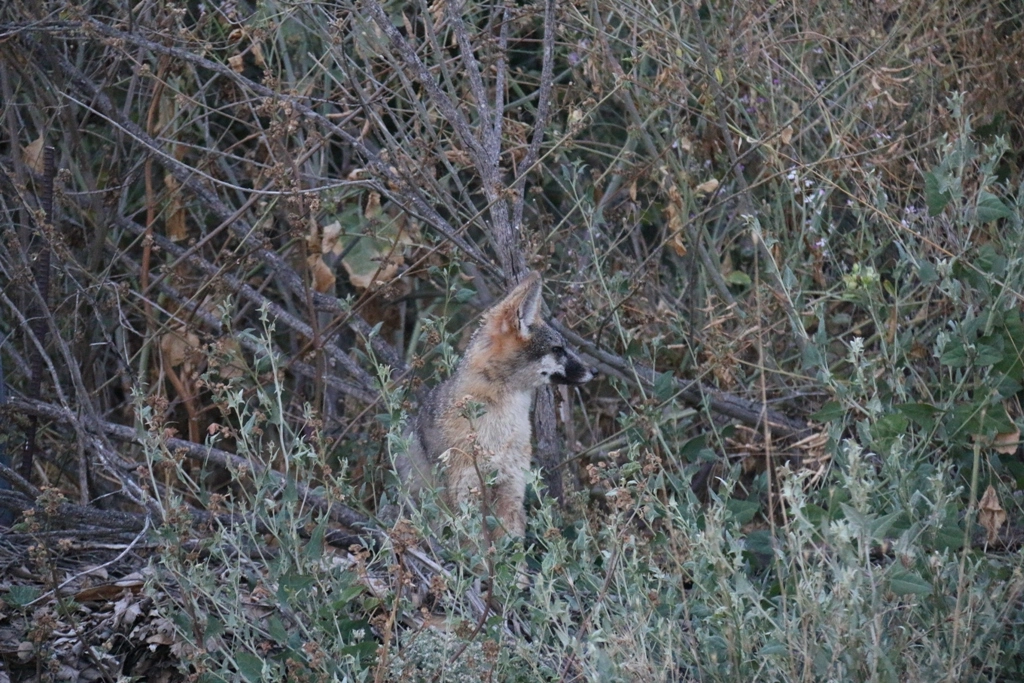
In making such decisions, by knowing the alternatives, by weighing each possibility, Laimos seemed to be thinking in a similar pattern to ourselves when we have, for instance, three possible routes of action. We weigh each and usually decide on what we think is our best option just as Laimos did.

Gray Foxes General Health
These two foxes appear to be in good health.
Total Numbers of Gray Foxes in the Palo Alto Baylands Nature Preserve
As of July, 2021, we have two adult gray foxes living in the Palo Alto Baylands Nature Preserve.
Section II
Update for the Urban Wildlife Research Project
Check out our Facebook page.
BE SURE TO check out our YouTube Channel for some incredible wildlife videos at https://www.youtube.com/channel/UC5ujc7p8dU1-O5AbPAWz2_Q
Check out Bill’s interview of January 1, 2021, hosted by the Town of Woodside California for their First Friday event at https://youtu.be/QrZzvmrqKTA
Undoubtedly the best Radio interview – KALW (Local PBS) Audio Recording Interviewed by Sofie Kodner during December 2020 – Broadcast 1/11/2021 5:00 PM on PBS’s program Crosscurrents https://www.kalw.org/post/bay-area-wildlife-habitats-are-disappearing-fox-guy-has-plan
Bill had a conversation with John Muir Laws and Marcia Sivek during a drawing workshop featuring the gray fox with the renowned artist John Muir Laws on January 14, 2021. It aired from noon until 1:30 PM. The Gray Fox: Art and Conservation • John Muir Laws
You can access Bill’s PowerPoint presentation Corridors & Connections: Sustaining the Health of All Wildlife presented during the October 24th P-22 Urban Wildlife Festival here: https://www.youtube.com/watch?v=Dh4MQL1D1Cc
NEW – To find out more about us, search Urban Wildlife Research Project, UWRP, gray foxes, wildlife connection, linkages, corridors and several documentaries including the video clips
If you haven’t had a chance to read some of the articles that have been written about our study of gray fox behavior and our corridor work, click on these links as they will take you to the source: Bill Leikam – The Fox Guy, and Greg Kerekes & URWP
Section III
Gray Fox, Baylands Goals
Within the permit that allows the Urban Wildlife Research Project to conduct its study of the behavior of the gray fox at the Palo Alto Baylands Nature Preserve, the objectives covered area:
- Monitoring of urban gray fox Denning sites in Palo Alto Baylands.
This is being accomplished during the period when the gray foxes use a den site. It is one of the prime locations for gathering most of the behavioral data of the litter and for adults alike.
- Assessment of status and population trends of Baylands urban gray foxes
Since January 2019 a pair of resident gray foxes have claimed territory at the Palo Alto Baylands Nature Preserve.
- Identification of habitat features that promote the presence of urban gray foxes
After considering this and talking with people who know how to restore habitats, we need to assess what kinds of plants, including the Alkaline Salt Bush, would grow best along the edge of the saltwater channel and alongside the marsh. We need to grow a permanent habitat that contains the corridors and plant it as soon as possible. We’ll keep an eye on this as this is a critical link between the southern region of the Baylands and the northern region.
- Assessment of reproductive success and identification of factors that promote successful reproduction
Open up the pinch-point along Matadero Creek by developing thickets that link one area to another, instead of the present “islands”.
- Identification and assessment of possible dispersal travel routes.
Presently there can only be guesses as to dispersal travel routes. We intend to make this important question much more concrete when we attain our collaring/take/capture permit from the Department of Fish & Wildlife.


